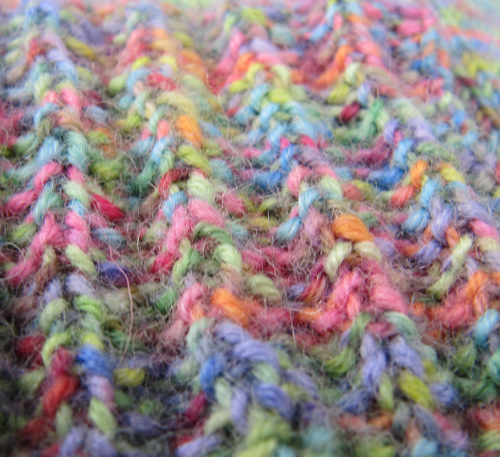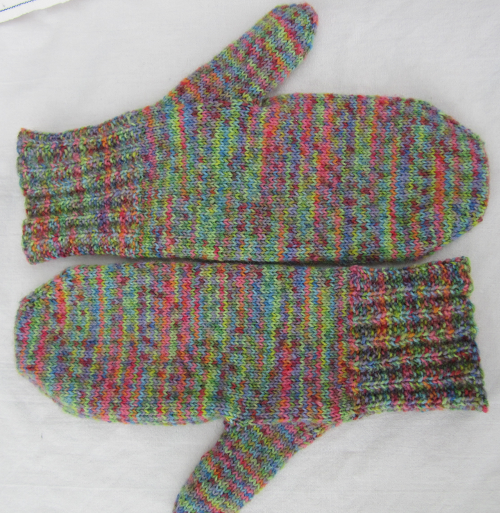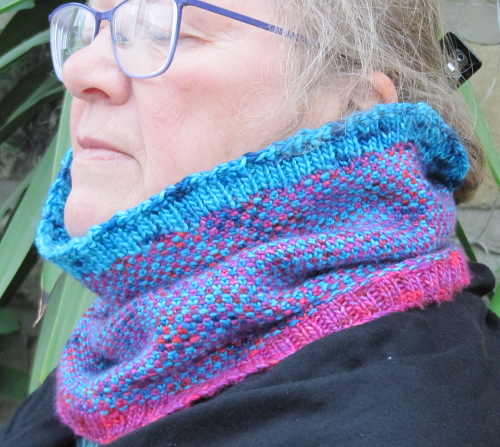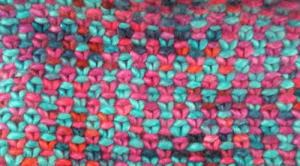There is a saying that “If March comes in like a lion it goes out like a lamb”, and vice versa. March certainly arrived tamely with three days of dense fog, not unusual where I live on the side of a hill; we often find ourselves up in the clouds, and the accompanying lack of wind means it can last quite a while.
The blanket is getting big! I am already using two 150cm circular needles to comfortably accommodate the 576 stitches. The first half of the month was cold, but by the 16th temperatures were beginning to rise, and the month ended in the low 20s and very sunny. In fact the temperatures on the last two days of March were a UK 50-year record for the month.
The warmth at the end of the month – reaching just over 23 C on one day – is certainly helping to dry out the soil and open the buds on the trees and bushes. The daffodils are colouring the border of our driveway and the leaves are unfurling on the apple trees. Suddenly, it is all looking very green and yellow!

The first day of March is marked by the Hamsa Hand stitch marker 
February and March, note the colour contrast
The colours of the blanket have changed from shades of blue to shades of green, too, even veering to yellow on the last two days of the month, and there have been a lot of sunny days, even if they have not been particularly warm. I have used nearly an entire ball of Rowan Kidsilk Haze Eve Green (denoting sun) just for the first three months of the year! In fact, there have been 30 days in the first 90 days of the year when the weather was predominantly sunny. That seems like a lot, given our latitude, and my experience of more than 20 years living in the same place!
I am now up to day 90, and have 576 stitches on the needle; the blanket is approximately 72 cm in diameter (unstretched), and I am very happy with my progress.
It’s not too late to join in and knit your own Temperature Pi Blanket. You can download the pattern and accompanying spreadsheet from Payhip
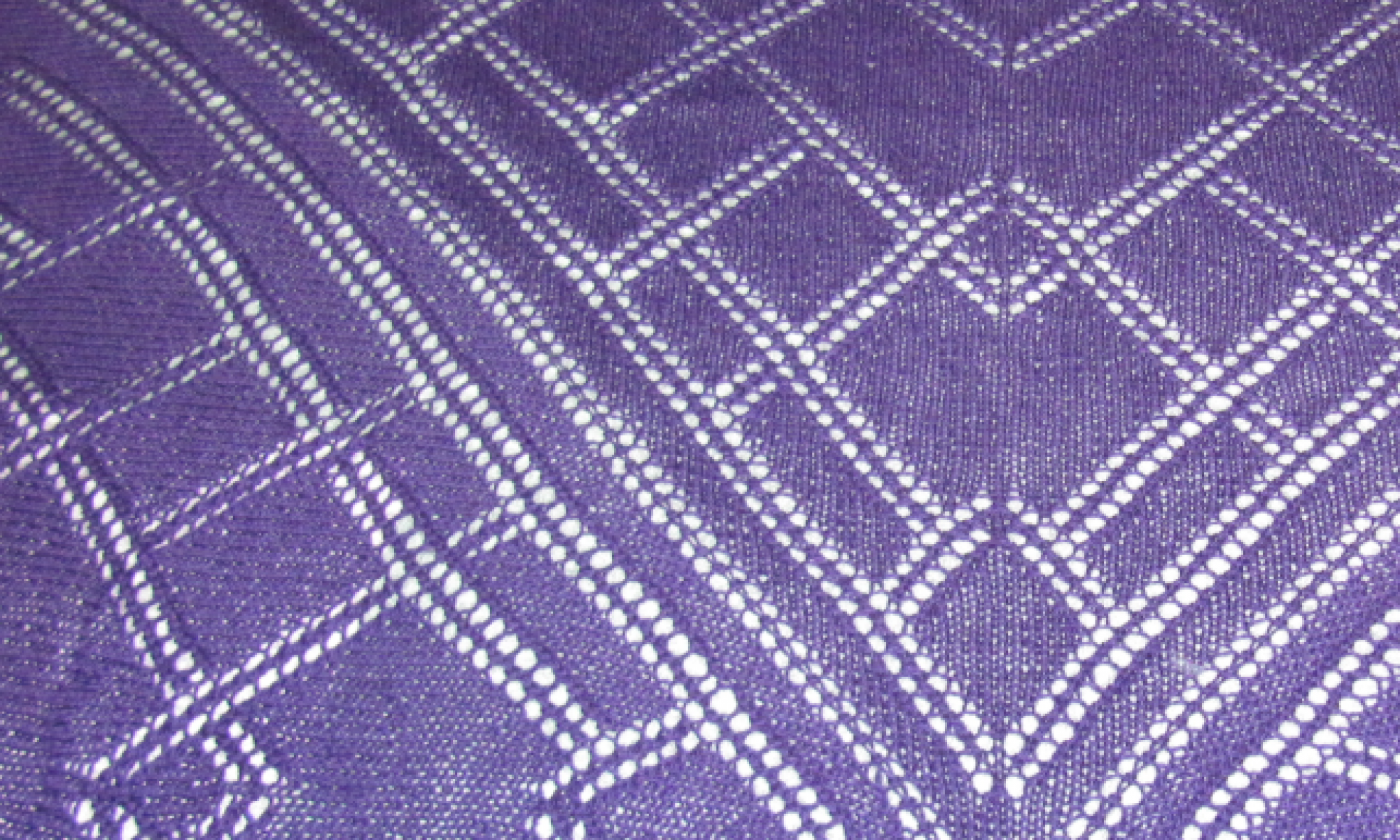


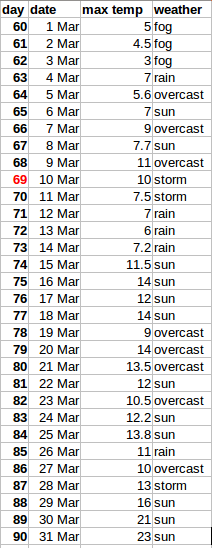



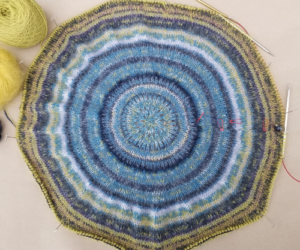

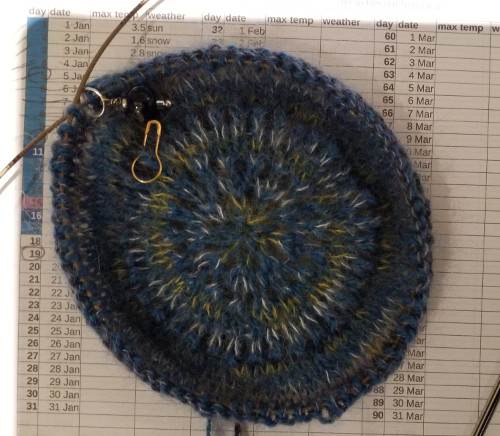 Small beginnings, but it will grow!
Small beginnings, but it will grow!